
My great- great- great grandfather—through my paternal line, via his mother—was Barzilla Payn (later spelled Payne) (1808-1863). In the early 1850s, about nine years after Texas achieved statehood, he moved from Paoli, Indiana, to Texas with his extended family of ten. Like many, he sought opportunities on the Texas frontier and was willing to risk the unknown to create a better life for himself and his family. Given his early service as a volunteer soldier, he was no stranger to placing himself in harm’s way, and he must have had an adventurer’s spirit.
Barzilla Payn was the son of Daniel Payn (1789-1839) and Elizabeth [Harrel] Payn (1783-1855), who married on January 22, 1806, in Caswell County, North Carolina. Records show that the couple was living in North Carolina when Barzilla was born on September 11, 1808. Barzilla had three siblings: Elizabeth Payn (1816-1900), Rice W. Payn (b. 1819), and Archy Payne (b. 1819). Sometime after 1830, the family moved to Paoli, Indiana.
In 1832, when he was twenty-four years old, he fought in the Black Hawk War as a private in Captain Moffet’s Company, 4th Regiment, 3rd Brigade, Illinois Mounted Volunteers. Upon returning to Paoli, he married Sarah Johnson (1811-1837) on April 3, 1834, and had three daughters: Matilda Ann Payn (1834-1911), Cynthia Ann Payn (1836-1913), and Sarah Elizabeth Payn (1837-1910). Barzilla’s wife died at age twenty-six on October 10, 1837, a few days after giving birth to their third daughter.
A year later, on November 8, 1838, Barzilla married Susan Jane Davis (1820-1864) in Paoli. The couple had four children: Martha Jane Payn (1839-1917), who is buried at the Payne Gap Cemetery; Evaline Constentine Payn (1841-1919), who is buried at the city cemetery, Marble Falls, Texas; John Davis Payn (1843-1863), who died from Civil War wounds and was buried in Lampasas, Texas (he never married); and Larkin W. Payn (1845-1929), who was buried in Lampasas, Texas. The 1840 U.S. Census shows that the Payn household included Barzilla as head of household and six other females: three under five years old, one between five and under ten years old, and two between fifteen and under twenty years old.

In June 1846, Barzilla again served—this time with the Indiana Volunteers during the Mexican War—joining as a private and serving as the musician of Company B, 2nd Regiment. He was mustered out on June 23, 1847, to New Orleans, Louisiana, by order of Colonel S. Churchill. Family lore suggests that Barzilla never sympathized with the Confederacy and remained a Union loyalist during the Civil War.
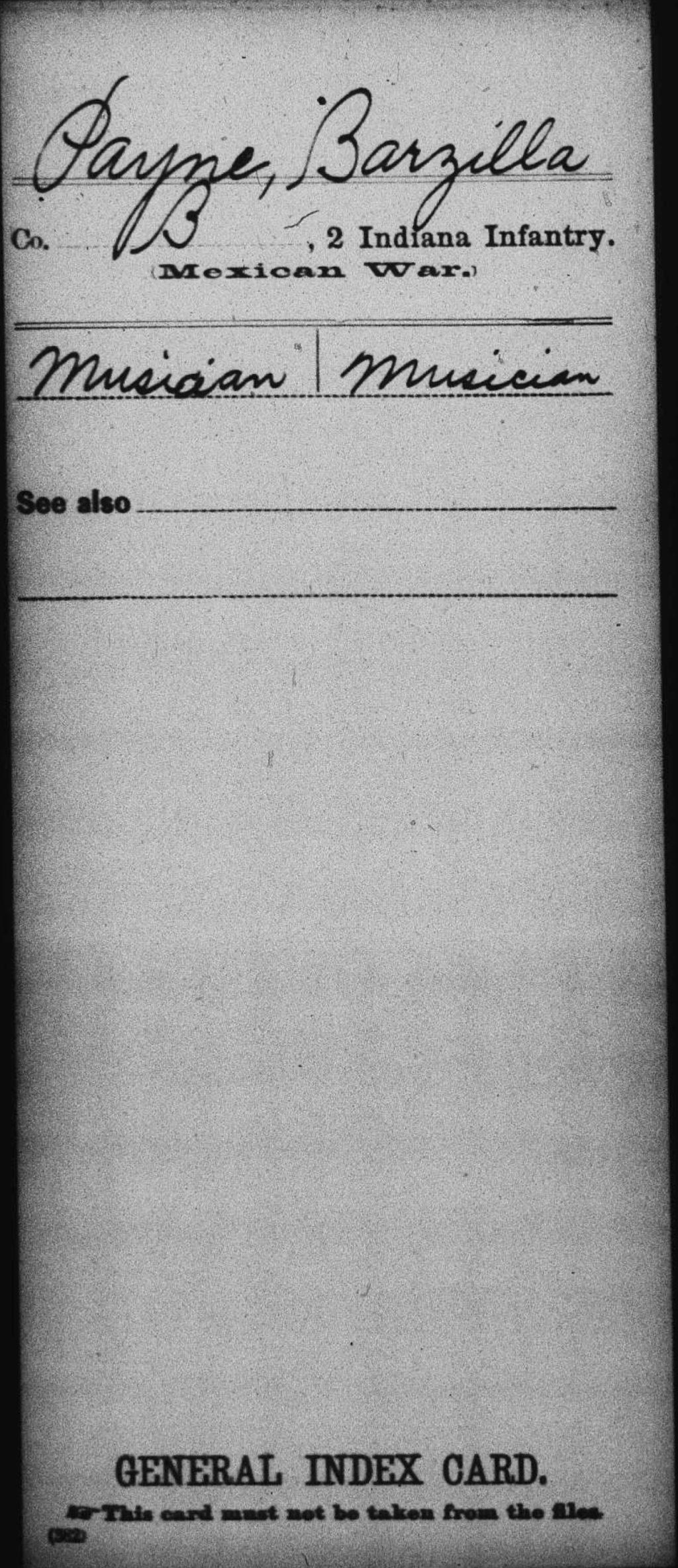
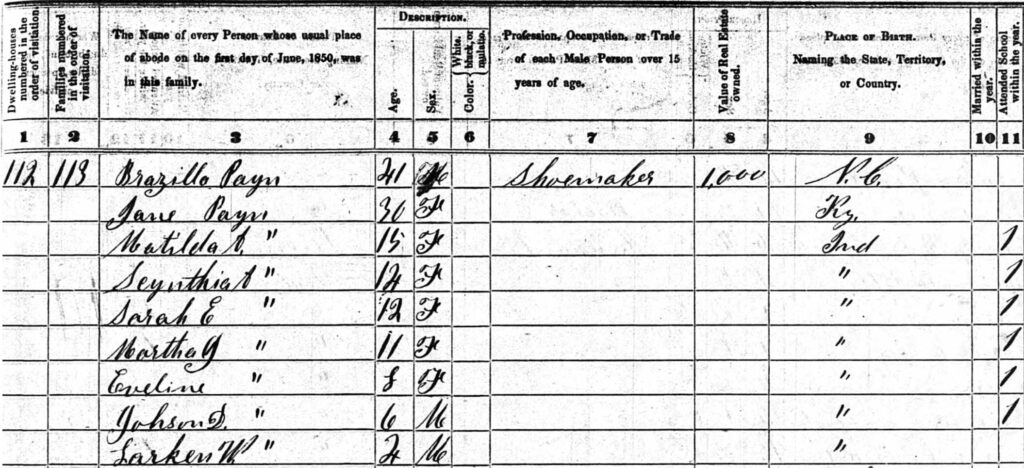
Around 1853, Barzilla and his family moved from the Orleans, Indiana and Paoli area to Texas. Barzilla and his future son-in-law, Harrison Miller (1832-1911), were drawn to business opportunities in Austin: Harrison planned to open a furniture shop, and Barzilla wanted open a shoe store. In his youth, Barzilla apprenticed as a shoemaker, and he had a shoe shop in Orleans, Indiana, crafting work and dress shoes for men and women (he is said to have been particularly proud of his kid dress shoes). The nine-hundred mile journey by horse and wagon was hazardous and long: on a good day, they could travel about twenty miles.

The difficult journey ended in disappointment when they found out that Austin was already saturated with similar businesses. They were further disheartened by a bitter winter. They stayed in Austin for less than a year before the family moved northwest towards Lampasas County. In 1856, Barzilla settled his family into a cabin in Llano County at what likely was a company town or village related to a salt-making facility near a spring close to the Colorado River, and some of the family may have worked there. The facility is now submerged by Lake Buchanan. While his family lived and worked there, Barzilla spent time searching for land.
In 1857, he attempted to acquire 160 acres located in Lampasas County (Travis Land District, Abstract 538) by filing a preemption claim—just a year after the county had formed. The filing was unsuccessful because he did not meet the homesteading requirements, particularly the land improvement provision. A later preemption filed by William H. Phillips in 1875 for the same piece of land invalidated Barzilla’s claim. The Lampasas County surveyor, G.C. Greenwood, wrote that Phillips’ preemption “covers a dead preemption in the name of Barzella Payne and … that Barzella Payne’s preemption is and was entirely abandoned by said survey and that he left no improvements upon the same.”
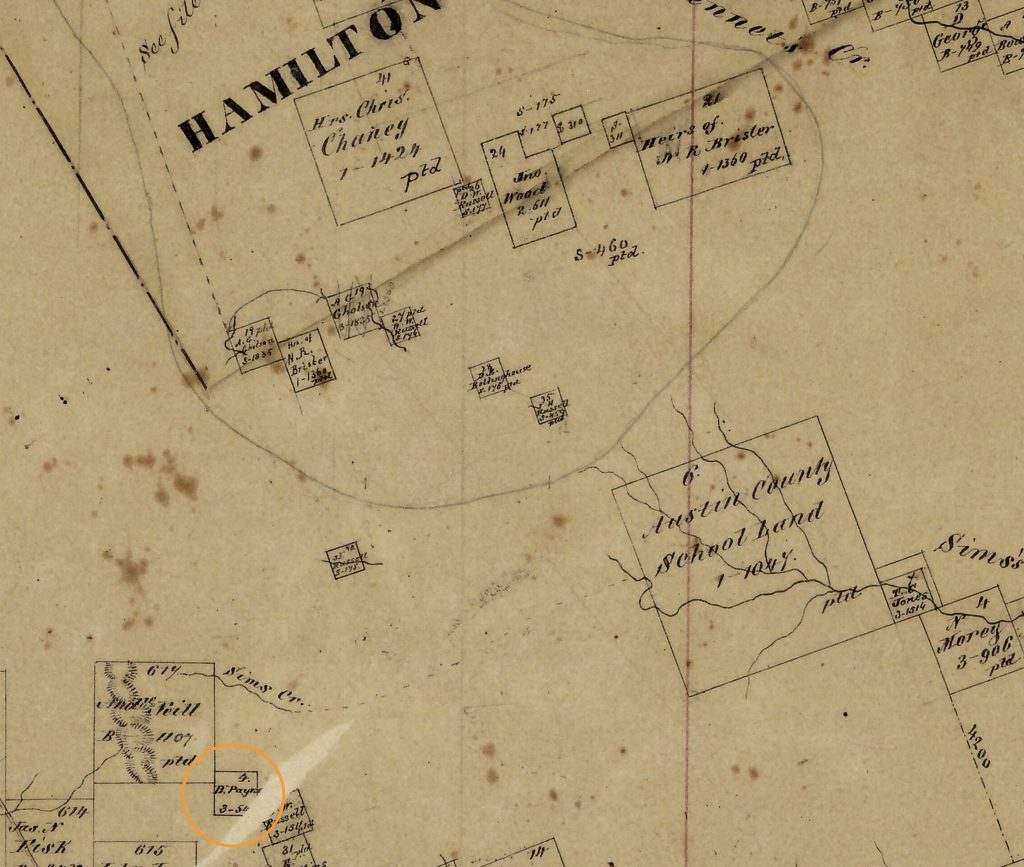
In the same year, Barzilla purchased eighty acres for forty dollars from the Texas Land Office by land scrip.1An act of the Texas legislature dated February 11, 1850 authorized the commissioner of the Texas General Land Office to issue land scrip at $.50 per acre for the liquidation of the public debt of the late Republic of Texas. This parcel, northeast of his 160-acre canceled preemption, would later be divided across counties: sixty-five acres in Mills County (created in 1887) and fifteen acres in Lampasas County (created in 1856). Barzilla also tried to enlarge his land holdings by acquiring the balance of a land credit left over from a headright certificate issued to John Wood on February 11, 1848. Barzilla attempted to use the credit, equal to 575.5 acres, to acquire a plot in Mills County near the eighty acres he had earlier purchased. In 1857 he had a survey created, but it appears that ownership of this land never transferred to Barzilla.

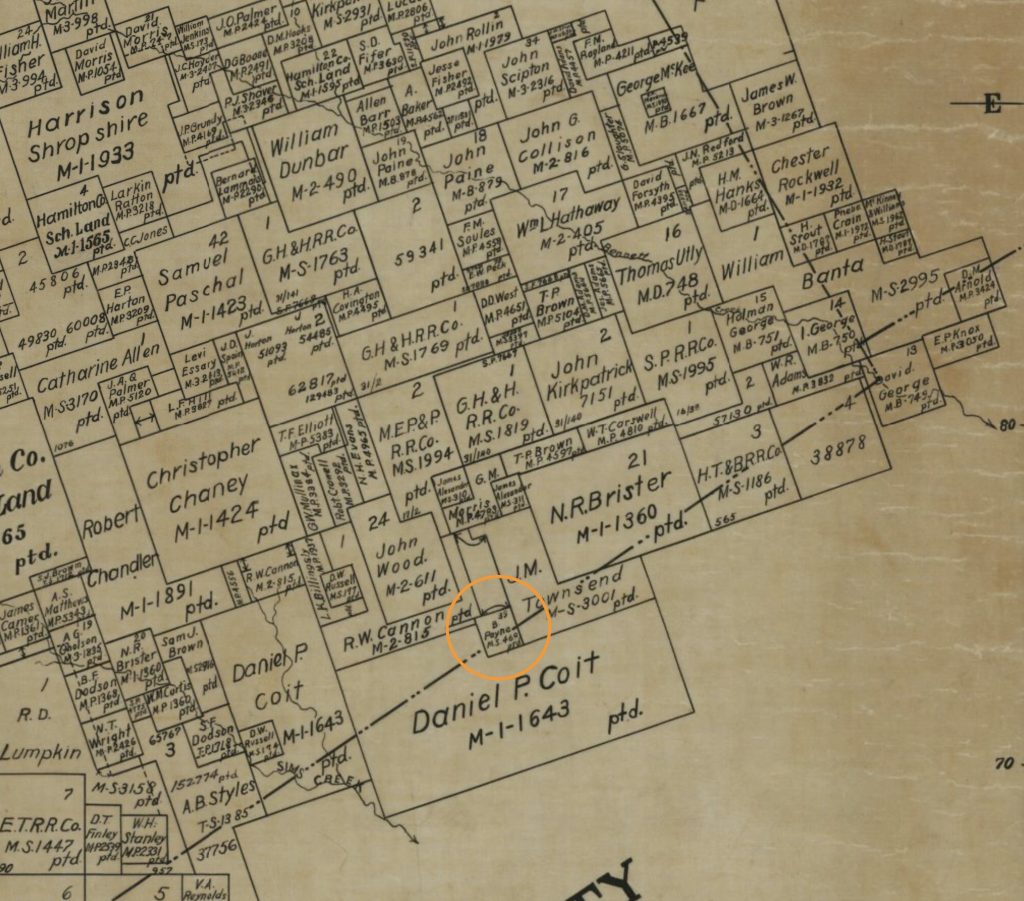
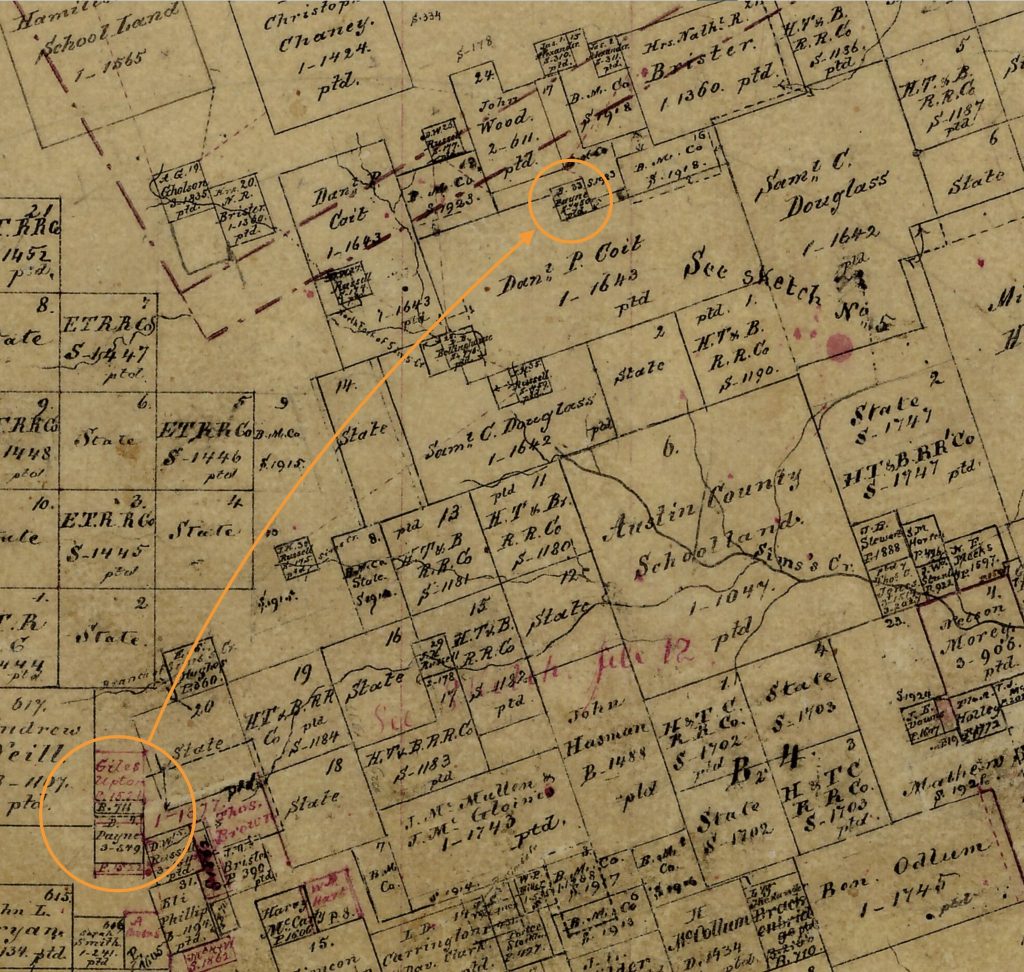
Barzilla’s eighty acres set the stage for other pioneers that followed, and eventually the small community of Payne Gap sprang up. The community grew to include a post office, which was active from 1888 through 1916, a blacksmith shop, a general store, a school, and a cemetery.
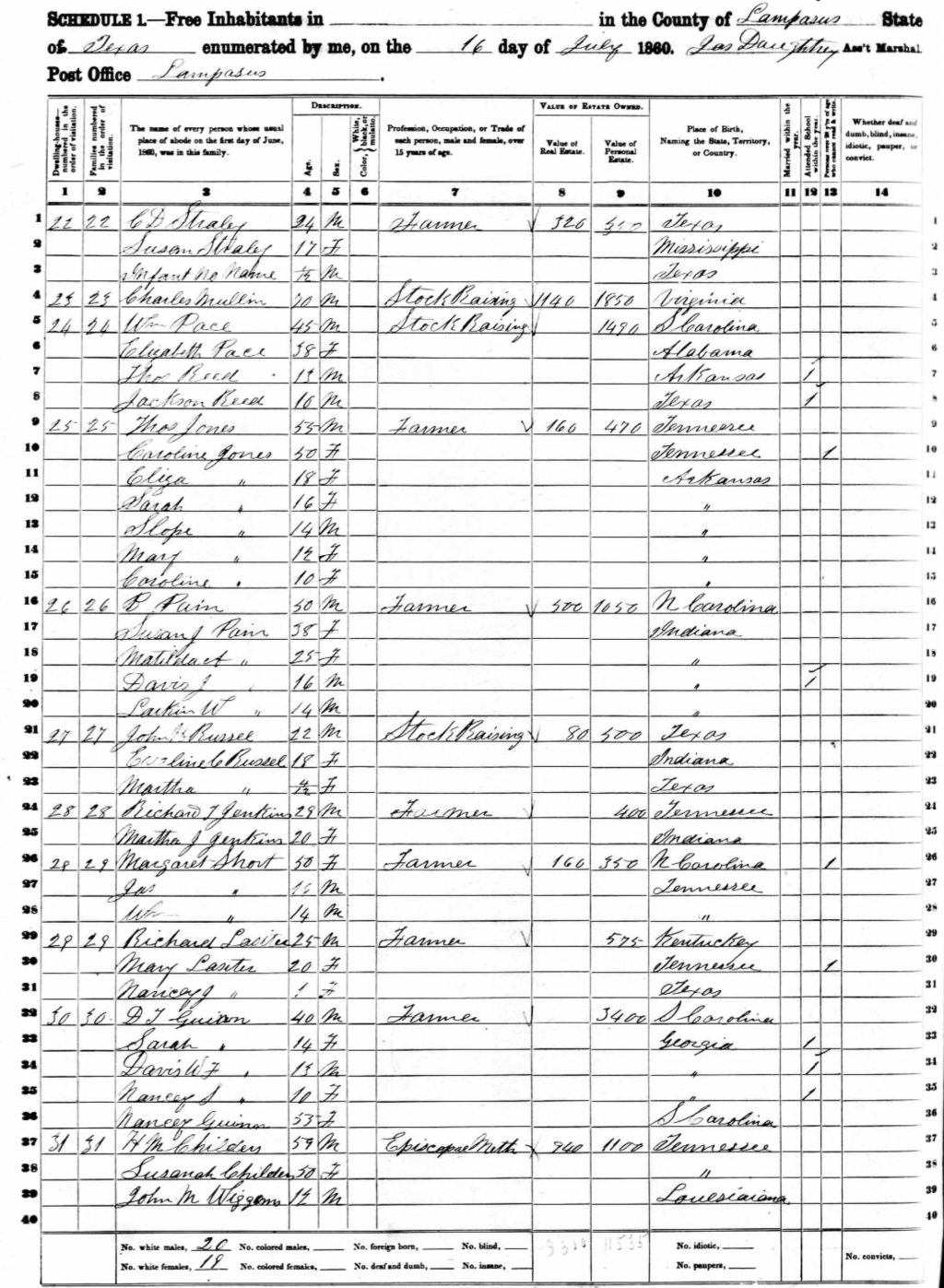
Barzilla adapted to rural life by becoming a farmer and sheep rancher. On November 28, 1863, at the age of fifty-six, at a time when Native American Indian raids were common in Central Texas, he was ambushed and scalped by the Comanche Indians while he was rounding up his flock of sheep. Earlier the same day, the band had attacked his son-in-law, Harrison Miller (1832-1911), while he was at his cabin about a mile from where Barzilla lived. Miller and his wife Cynthia had recently moved from Williamson County to be near her parents. Barzilla’s tragic death has been a part of family lore for many years, and many accounts sensationalize the incident.
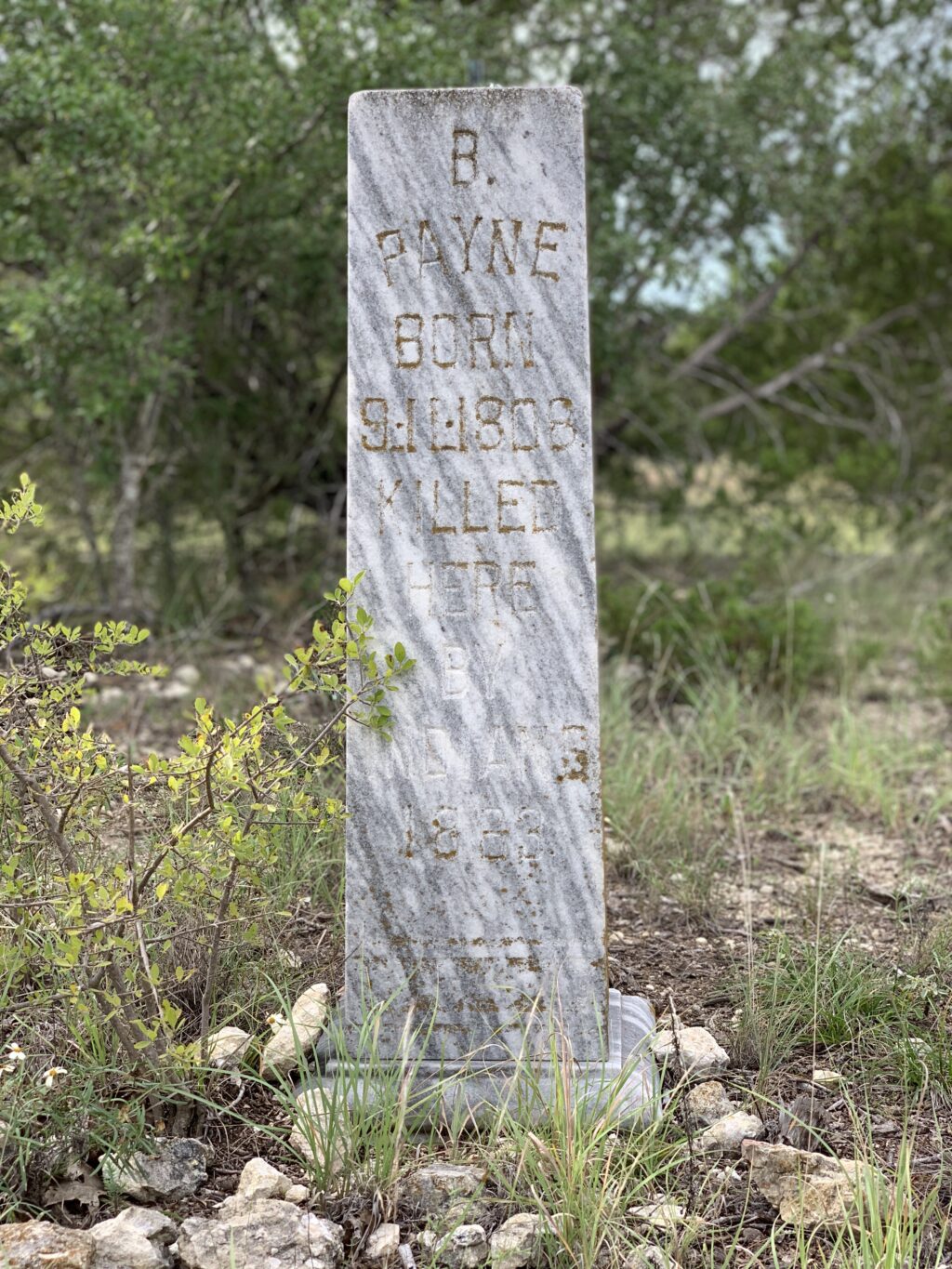
Barzilla and his wife Susan are buried at the Barzilla Payn Gravesite, located on private property owned by Ray Baird. One of is daughters, Martha Jane Payn (1839-1917), is buried at the Payne Gap Cemetery next to her husband, Richard T. Jenkins (1830-1903).
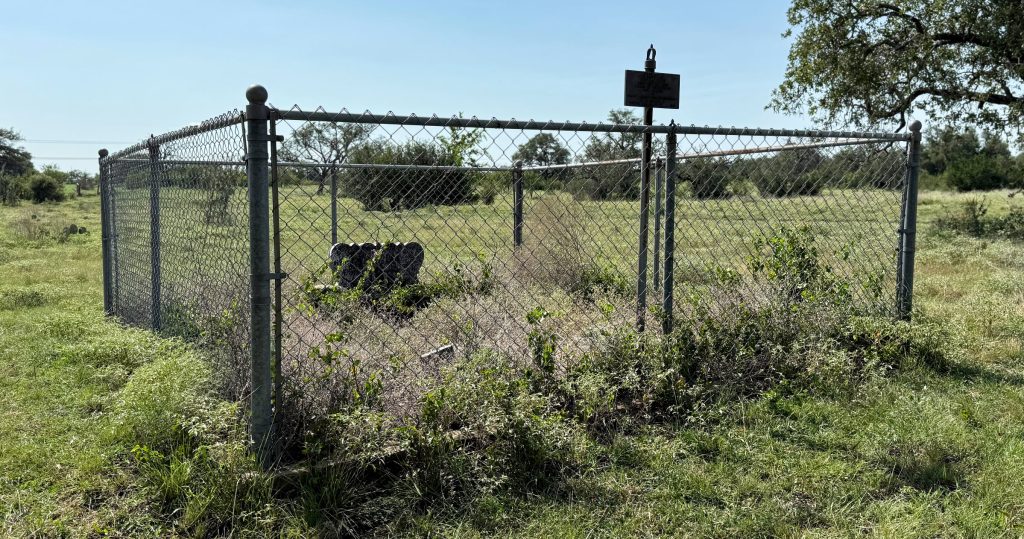
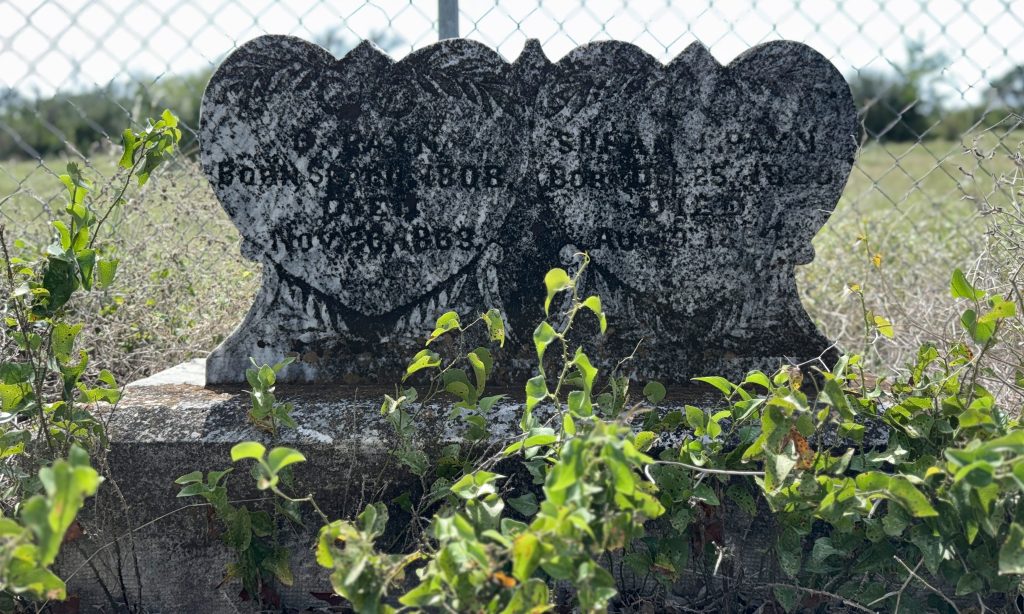
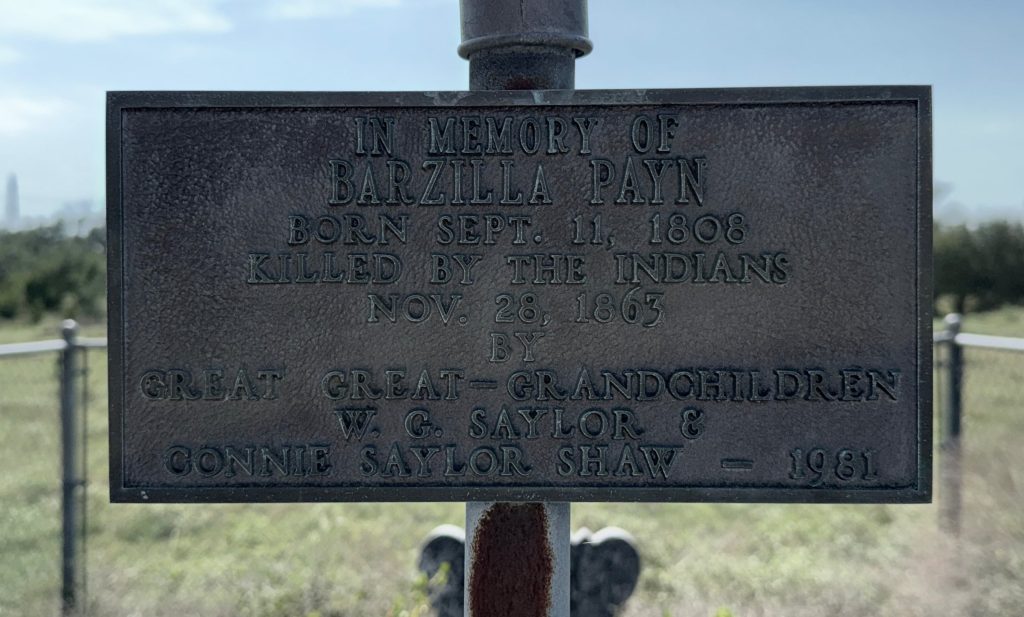
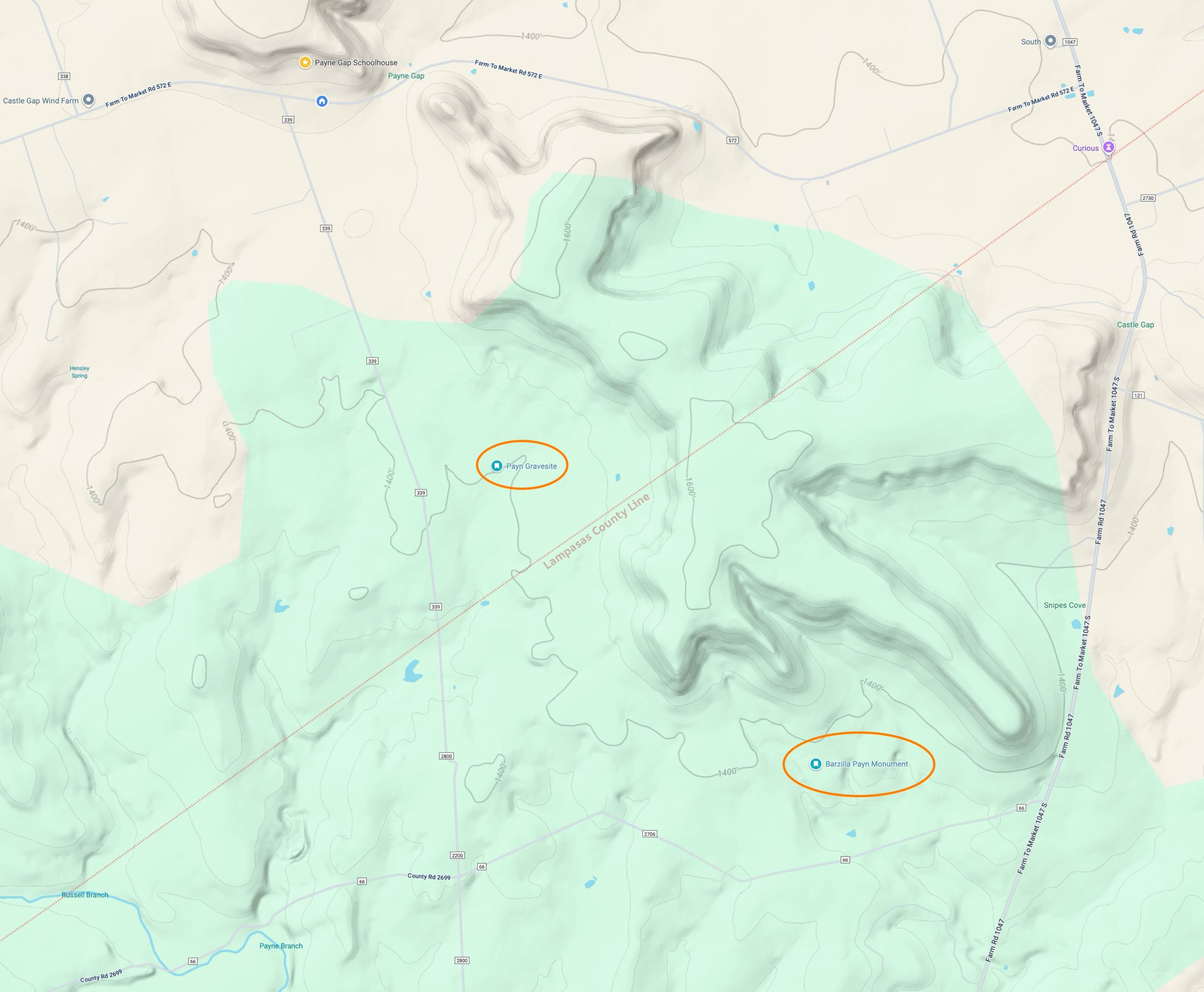
Sources Consulted
- Ancestry.com
- Blackwell, Hartal Langford. Mills County: the Way it Was (Goldthwaite, Texas: Mills County Historical Commission, 1976)
- Bowles, Flora Gatlin, ed. A No Man’s Land Becomes a County (Goldthwaite, Texas: Mills County Historical Society, 1958)
- Familysearch.org
- Lampasas County, Texas: its History and its People (Marceline, Missouri: Walsworth Publication Company, 1991)
- McGlothlin, N.G. Life of a Texas Pioneer Christened Payne’s Gap (Blanca, New Mexico: N.G. McGlothlin, 1932)
- Mills County Memories (Goldthwaite, Texas: Mills County Historical Commission, 1994)
- Shaw, Connie Saylor. Climbing the Family Tree (Goldthwaite, Texas: Eagle Press, 1986)
- Scroggins, Mary A. Payne and Hunt Family History (unpublished manuscript)
- Texas General Land Office digital records, with special thanks to Laurel Neuman, Research Specialist, Archives and Records
- 1An act of the Texas legislature dated February 11, 1850 authorized the commissioner of the Texas General Land Office to issue land scrip at $.50 per acre for the liquidation of the public debt of the late Republic of Texas.


This is so interesting! Probably, my great-grandfather, William (Grandpa Billy) Carswell bought part of the Brister place on your map here since that designation remains on the tax records as the Brister place. A Mr. Brister is on quite a few of our records so he must have been a descendent and owner of that piece of property. I believe my dad, Aubrey W. (Pat) Carswell, bought that property from Mrs. Dave Phillips.
Patsy! Thanks for adding to the story of Payne Gap. I know the Carswells played a pivotal role in the Payne Gap/Moline stories.